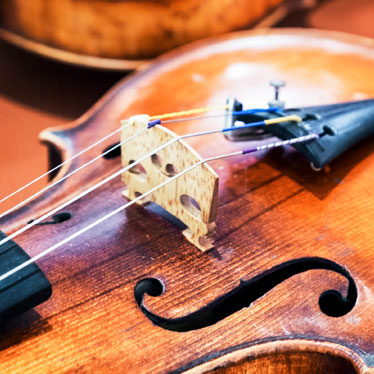Tips For Choosing The Right Viola

Many beginner viola students and their parents find themselves at a loss to know the right way to pick out an instrument. They want to choose the right size and quality, but aren’t sure what to look for when considering those factors; moreover, for most people, cost can be a major concern. All these factors can be a huge impediment when choosing a viola, and often make you feel overwhelmed. Parents of small children also typically want to know if they will be responsible for buying larger instruments as their student grows.
Choosing a viola doesn’t have to be a challenge. Nor, does it have to be a huge financial strain on your family. As long as you stick to a few basic parameters, you can make the right choice for your beginner viola student, without making a huge dent in your household budget.
The first rule of thumb when choosing a viola is to talk to some experts. Your beginner viola instructor or a trusted string instrument dealer can give you a number of pointers on the right size, quality, and buying options for your instrument needs.
Age Considerations
The most influential factor when choosing a viola pertains to your student’s age. Not only does age impact the size of the viola you’ll need, it also dictates whether or not you’ll need replacement instruments as your child grows. By approaching this requirement in two ways, you can make the best choice for your student musician.
Size Concerns:
Parents should understand that there are absolutely no “standard” set of sizes for the viola. Unlike the violin or the cello, the size measurements aren’t universal, so you have violas that range in length from 12-17 inches; measurements that are approximate, and can vary depending on the instrument manufacturer or craftsman. The most common adult size viola is approximately 16” when the length is measured from the back, minus the neck, scroll, and end button.
Measure your child’s arm length to get a god idea of the initial size you’ll need:
- Have your student stand and extend their left arm on the side of their body, palm up—essentially, freeze the arm position in the middle of a jumping-jack
- Measure from the neck, to the top part of the palm—the padded part at the base of your fingers
|
A rm Length |
Corresponding Viola Size |
|
20” |
12” |
|
21.5” |
13” |
|
23” |
14” |
|
24.5” |
15” |
|
26” + |
16” + |
If the viola is uncomfortable or your child can’t reach fourth finger positions, it’s too big. Playing on an instrument that is too big can lead to serious injuries, so if in doubt, choose a viola that is just a shade smaller, rather than too large.
Buy or Rent:
If beginner viola students are young and will most certainly outgrow the viola size they need now, you may want to consider renting a smaller instrument, and then purchasing your full size instrument later. This is also a good option if you aren’t sure about the commitment level. If you think that your child’s interest for the viola might wane, renting is a wise choice.
Rental rates vary depending on where you live, but you can expect to pay around $20-$45 per month for rental fees. Although it’s not a wide-spread procedure, some dealers offer purchase discounts for previous renters. Check with your local instrument shop to find out about what buying plans they offer. If you add instrument insurance, it can cost an extra $5-$20 per month depending on the specific policy you choose.
Purchasing is an excellent option if you happen to find a great instrument whose size will fit for a few years. When you need to upgrade, you can sell your old viola and apply that amount to the new purchase costs.
Materials and Construction
The viola is an organic instrument. Because natural materials are used for its construction, certain factors must combine to produce a pleasing sound. When choosing a viola look for specific traits, such as:
- Quality tonewoods—the viola should feature a Spruce wood belly (top plate), and include other woods like maple and ebony.
- Tight Construction—Like the violin, the fittings have an influence in the sound quality. Observe the body of the instrument carefully looking for hairline cracks along the sides, where the neck attaches, and in the peg box. Although those problems are minor and can be fixed, they can magnify very quickly if ignored.
- Symmetry and Alignment—your viola should be constructed so that both sides (when drawing an imaginary line, parallel with the strings drown the middle) appear in perfect proportion. The alignment of the viola is a good indicator of the type of workmanship used to create it.
By using these tips, choosing your viola will be a breeze.


